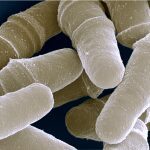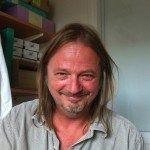Link to Pubmed [PMID] – 22002604
Nature 2011 Nov;479(7371):135-8
Heterochromatin comprises tightly compacted repetitive regions of eukaryotic chromosomes. The inheritance of heterochromatin through mitosis requires RNA interference (RNAi), which guides histone modification during the DNA replication phase of the cell cycle. Here we show that the alternating arrangement of origins of replication and non-coding RNA in pericentromeric heterochromatin results in competition between transcription and replication in Schizosaccharomyces pombe. Co-transcriptional RNAi releases RNA polymerase II (Pol II), allowing completion of DNA replication by the leading strand DNA polymerase, and associated histone modifying enzymes that spread heterochromatin with the replication fork. In the absence of RNAi, stalled forks are repaired by homologous recombination without histone modification.

